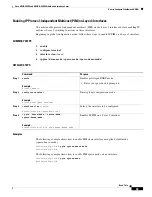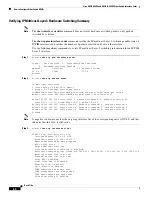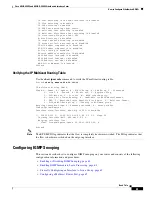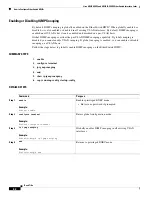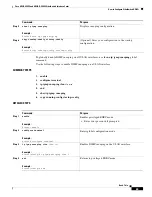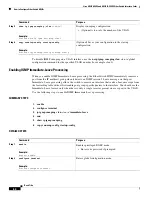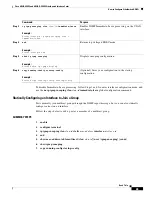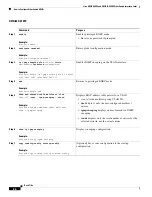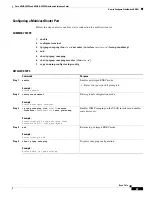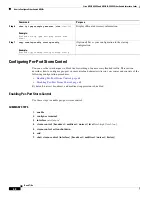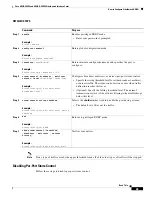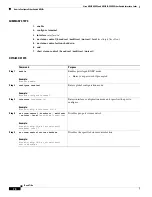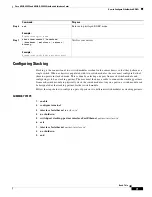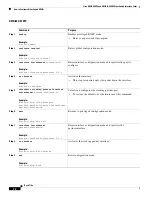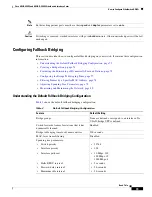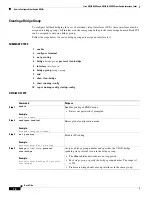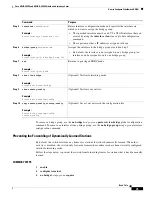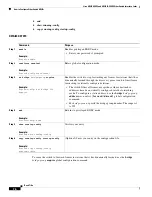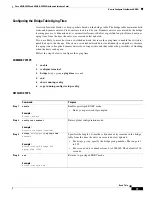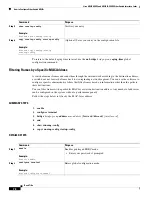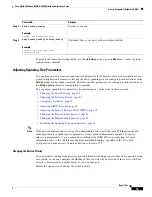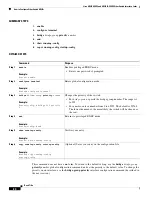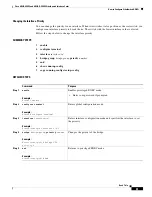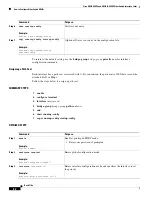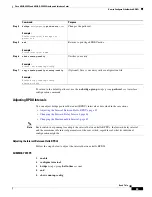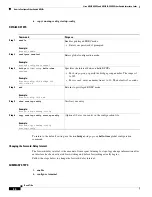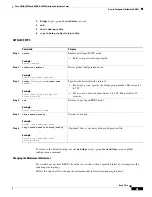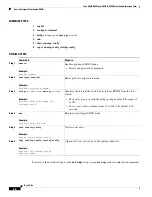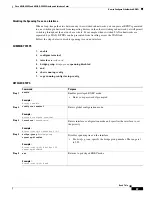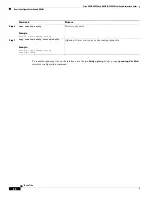
Cisco HWIC-4ESW and HWIC-D-9ESW EtherSwitch Interface Cards
How to Configure EtherSwitch HWICs
73
Book Title
Note
Both stacking partner ports must have their
speed
and
duplex
parameters set to
auto
.
Caution
If stacking is removed, stacked interfaces will go to
shutdown
state. Other nonstacked ports will be left
unchanged.
Configuring Fallback Bridging
This section describes how to configure fallback bridging on your switch. It contains this configuration
information:
•
Understanding the Default Fallback Bridging Configuration, page 73
•
Creating a Bridge Group, page 74
•
Preventing the Forwarding of Dynamically Learned Stations, page 75
•
Configuring the Bridge Table Aging Time, page 77
•
Filtering Frames by a Specific MAC Address, page 78
•
Adjusting Spanning-Tree Parameters, page 79
•
Monitoring and Maintaining the Network, page 89
Understanding the Default Fallback Bridging Configuration
shows the default fallback bridging configuration.
Table 2
Default Fallback Bridging Configuration
Feature
Default Setting
Bridge groups
None are defined or assigned to an interface. No
VLAN-bridge STP is defined.
Switch forwards frames for stations that it has
dynamically learned
Enabled.
Bridge table aging time for dynamic entries
300 seconds.
MAC-layer frame filtering
Disabled.
Spanning tree parameters:
•
Switch priority
•
Interface priority
•
Interface path cost
•
Hello BPDU interval
•
Forward-delay interval
•
Maximum idle interval
•
32768
•
128
•
10 Mbps: 100
100 Mbps: 19
1000 Mbps: 4
•
2 seconds
•
20 seconds
•
30 seconds

